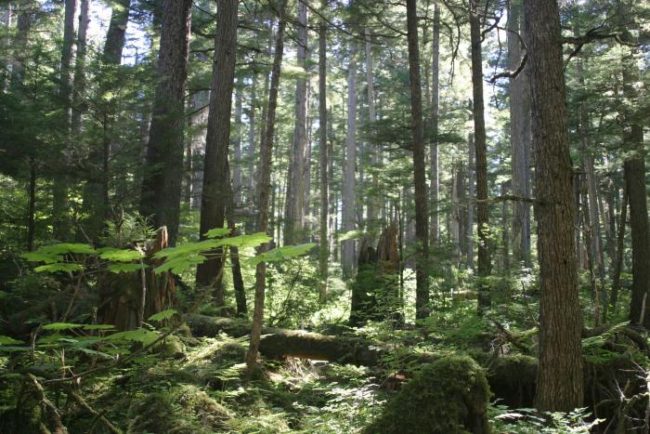
To help address climate change, one of the biggest oil companies in Alaska is paying to keep forests standing on land managed by two Native corporations.
At an industry conference held Friday in Anchorage, BP Alaska president Janet Weiss announced the company has developed two carbon credit offset projects with Alaska Native corporations Ahtna and Sealaska.
“We will use offsets as one of the tools to underpin our low-carbon ambitions,” Weiss said.
Carbon offsetting is a mechanism that allows a company like BP to pay a landowner to maintain a forest, to keep it from being logged. Trees take in carbon dioxide as they grow, helping make up for the company’s greenhouse gas emissions.
Weiss said the Native corporations have agreed to maintain the forests they manage for at least 100 years. The deal is verified through California’s cap-and-trade program. California regulates greenhouse gas emissions and allows big emitters to buy carbon credits.
Details on BP’s carbon offset projects are limited — the terms of the agreements are confidential, Weiss said. She didn’t say what percentage of BP Alaska’s greenhouse gas emissions are being offset or how much money is involved.
But, Weiss added, “these credits will amount to significant revenue for Sealalaska and it will benefit their region and its communities for a very long time.”
Sealaska previously announced it has set aside 165,000 acres of forest to use as a carbon bank. According to Sealaska, that allows the company to sell 9.3 million carbon credits, representing 9.3 million metric tons of carbon dioxide.
A Sealaska spokesperson confirmed BP will be the corporation’s main buyer for its carbon bank.
In April 2018, Sealaska Corporation President and CEO Anthony Mallott described their project as being worth “multiple millions” of dollars.
Weiss said the carbon offset project with Ahtna was completed last October.
Ahtna declined to comment, but Weiss said that deal was “even larger” than Sealaska’s, calling it “the largest carbon credit event in North American history.”
